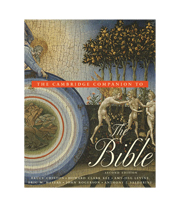The World of the Hebrew Bible
Published online by Cambridge University Press: 28 May 2012
Summary
THE WORLD OF ISRAEL'S ANCESTORS (THE BOOKS OF GENESIS THROUGH DEUTERONOMY) AND OUR WORLD
The first five books of the Bible describe the creation of the world (Genesis 1–2) and the earliest history of humanity including the destruction of the inhabited world by a flood, before they tell the story of the ancestors of Jacob, who came to be called “Israel,” which means “he struggles with God.” The story includes the call of Abraham to come to the land of Canaan (Genesis 12) and continues with the lives of Isaac and Jacob. Jacob is named Israel as the consequence of his physical struggle with God (Genesis 32), and he gives that name to the people called Israel. The twelve sons of Jacob/Israel go down to Egypt; after their descendants become a sizable people, they are forced into slavery by a pharaoh. Moses, one of the “Hebrews” (as the Egyptians call these foreigners with their strange, West Semitic language) brought up at the Egyptian court, leads the Hebrews out of slavery and through the wilderness of Sinai to the threshold of the land of Canaan. On the way, Moses gives the people, on behalf of God, civil, religious, and ceremonial laws that identify the Hebrews as the people of Yahweh, who first called Abraham, Isaac, and Jacob and who delivered the Hebrews from slavery.
- Type
- Chapter
- Information
- The Cambridge Companion to the Bible , pp. 39 - 326Publisher: Cambridge University PressPrint publication year: 2007



